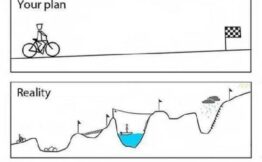Staatsverschuldung und Staatsdefizit von Belgien
Staatsverschuldung in der Europäischen Union (EU) , 8. Januar 2015
Auf dieser Seite finden Sie jeweils in tabellarischer Form Informationen zur zeitlichen Entwicklung der Höhe der Staatsverschuldung sowie des gesamtstaatlichen Defizits bzw. Überschusses von Belgien gemäß Maastricht-Vertrag. Ergänzend werden auch Informationen zu den staatlichen Zinsausgaben bereitgestellt. Ebenfalls aufgeführt sind im Abschnitt "Rahmendaten" Informationen zur Entwicklung des Bruttoinlandsprodukts (BIP) sowie der Gesamteinnahmen und Gesamtausgaben des Staates. Belgien ist seit dem 1.1.1958 EU-Mitglied und seit dem 1.1.1999 Mitglied der Eurozone.
What Europe would look like if it were redrawn based on debt
Mike Bird, Mar. 6, 2015, 1:12 PM
Deutsche Bank just published an interesting map that shows what Europe would look like if it were re-sized based on national debt per person.
Some countries shrink, while others swell up.
Sovereign debt is a contentious issue in Europe. Some countries (naming no names) see others as spendthrift and irresponsible, while others think the less indebted nations are penny-pinching Scrooge figures.
Here’s the map:
The Magic of Doing One Thing at a Time
by Tony Schwartz
Why is it that between 25% and 50% of people report feeling overwhelmed or burned out at work?
It's not just the number of hours we're working, but also the fact that we spend too many continuous hours juggling too many things at the same time.
What we've lost, above all, are stopping points, finish lines and boundaries. Technology has blurred them beyond recognition. Wherever we go, our work follows us, on our digital devices, ever insistent and intrusive. It's like an itch we can't resist scratching, even though scratching invariably makes it worse.
L’alcool et le sucre : qu’en est-il vraiment ?
Publié le jeudi 18 décembre 2014 à 12h41 – Mis à jour le lundi 05 janvier 2015 à 15h51
On pense souvent, et à tort, que l’alcool est plein de sucre. En réalité, ce n’est pas tout à fait vrai. Infos et conseils en cette période de fêtes avec Aline Ways.
Le sucre est partout… pour nous piéger!
Publié le samedi 07 mars 2015 à 13h56 – Mis à jour le samedi 07 mars 2015 à 13h56
Psycho et bien-être
Le sucre est partout, des sauces tomate aux charcuteries: pour rehausser une saveur ou une couleur, à des fins de conservation et par souci d’économies, ce qui le rend difficilement remplaçable dans l’alimentation industrielle.
Contre l’obésité, l’Organisation mondiale de la santé (OMS) veut diminuer les sucres “cachés” ou “libres”, ceux qui ne s’expriment ni en morceau dans le café ou poudre dans les gâteaux, pas plus en bonbons ou confitures. Mais ceux ajoutés par l’industrie aux produits alimentaires et jus, les concentrés de fruits, le miel, les sirops d’agave ou d’érable et tous ceux tirés de l’amidon de maïs et autres céréales.
Le cash coûte 300 millions d’euros par an aux banques belges
Trends Tendances 05/03/15 à 07:45 – Mise à jour à 07:44 Source : Belga La gestion du cash coûte 300





